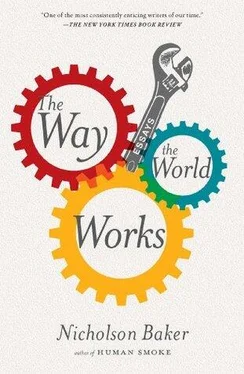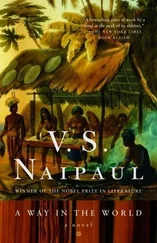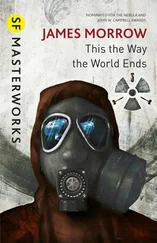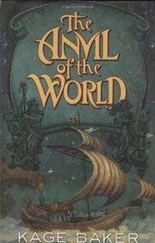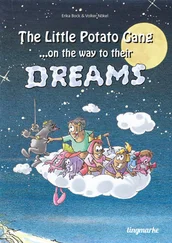Nicholson Baker - The Way the World Works
Здесь есть возможность читать онлайн «Nicholson Baker - The Way the World Works» весь текст электронной книги совершенно бесплатно (целиком полную версию без сокращений). В некоторых случаях можно слушать аудио, скачать через торрент в формате fb2 и присутствует краткое содержание. Год выпуска: 2012, Издательство: Simon & Schuster, Жанр: Публицистика, Критика, на английском языке. Описание произведения, (предисловие) а так же отзывы посетителей доступны на портале библиотеки ЛибКат.
- Название:The Way the World Works
- Автор:
- Издательство:Simon & Schuster
- Жанр:
- Год:2012
- ISBN:нет данных
- Рейтинг книги:4 / 5. Голосов: 1
-
Избранное:Добавить в избранное
- Отзывы:
-
Ваша оценка:
- 80
- 1
- 2
- 3
- 4
- 5
The Way the World Works: краткое содержание, описание и аннотация
Предлагаем к чтению аннотацию, описание, краткое содержание или предисловие (зависит от того, что написал сам автор книги «The Way the World Works»). Если вы не нашли необходимую информацию о книге — напишите в комментариях, мы постараемся отыскать её.
), here assembles his best short pieces from the last fifteen years.
The Way the World Works
OED
Modern Warfare 2
Through all these pieces, many written for
, and
, Baker shines the light of an inexpugnable curiosity.
is a keen-minded, generous-spirited compendium by a modern American master.
The Way the World Works — читать онлайн бесплатно полную книгу (весь текст) целиком
Ниже представлен текст книги, разбитый по страницам. Система сохранения места последней прочитанной страницы, позволяет с удобством читать онлайн бесплатно книгу «The Way the World Works», без необходимости каждый раз заново искать на чём Вы остановились. Поставьте закладку, и сможете в любой момент перейти на страницу, на которой закончили чтение.
Интервал:
Закладка:
(2002)
The Times in 1951
Written for the 150th-Anniversary Issue of the New York Times
Being a backward-looking person, I was curious to know what the New York Times was like in 1951, on its last big birthday. I happen to have handy an original bound run of the newspaper from that era, in all its wood-pulp bulk and glory — a set of daily papers which once looped and cavorted through the groaning machines that dwelled in the basement of Forty-third Street, in an atmosphere heavy with ink mist and paper dust. I pulled out some of the old volumes, set them on a long table and began turning my way through them.
1951’s pages are bigger than today’s by about the width of a current column. The passage of time has dyed them a champagney hue; as they slowly rise and fall they bring to mind the intermittent wingstrokes of some great hovering bird. There are fewer photographs and more monochrome Lord & Taylor fashion watercolors, signed by now-forgotten commercial artists like Karnoff and Hood: these are deftly blurry, like Japanese sumi paintings of twigs and birds. Only in the magazine section, in the ads, are there four-color illustrations: “It’s HELLMANN’S the WHOLE-EGG Mayonnaise!”
But what strikes one first about the publication of fifty years ago is how much it looks like what we read now. The delivery trucks and printing presses have disappeared from Forty-third Street (the New York edition is now printed in stylishly automated factories in Queens and New Jersey); reporters no longer chain-smoke at their Underwoods, or shout “Copy!”, or play cards, or place bets with Frenchie, the in-house bookie (who wore a beret and an ascot), or slip over to Gough’s, the bar across the street. But the Sulzbergers’ broadsheet has nonetheless remained faithful to its typographical traditions. And Al Hirschfeld’s pen, I was pleased to see, was there on the theater pages — precise, frolicsome, full of genius, then as now.
What was the news in 1951? Well, there was the Korean War. Lists of killed and wounded appeared on page three in small type; in April, after General Douglas MacArthur made one too many unauthorized remarks about the necessity of bombing China, President Truman relieved him of his command in the Far East. The uproar was immediate. The Daughters of the American Revolution were deeply troubled; there was talk of impeachment; private citizens took out ads protesting the president’s shameless act. The Times ’s editorialist, however, sided with Truman. “In this controversy this newspaper has taken an unequivocal stand in favor of the Government and against General MacArthur,” it said on April 17; there was no need for another world war, and Truman was right to assert “the supremacy of the civil government over any military authority.”
MacArthur’s farewell speech to Congress, though, was good — the Times found it “eloquent and deeply moving.” Lots of people saw it live, thanks to all those Emerson and Philco and Magnavox TVs that were advertised every day in the paper. “It was extraordinary television, whatever a viewer’s political feelings,” wrote Jack Gould, the Times ’s TV critic. Gould was particularly struck by MacArthur’s forceful comb-over: “He parted his hair low on the right side and had brushed it almost directly across his forehead.”
Whether MacArthur was in charge or not, the Korean War had to continue, many at the paper believed. The alternative was withdrawal, “throwing in the sponge before the knockdown,” and that would have “intolerable political, moral and psychological consequences,” according to a military analyst for the Times . Couldn’t nuclear weapons help somehow? In an article headlined ATOMIC DEATH BELT URGED FOR KOREA, the paper quoted from a letter to Harry Truman from Congressman Albert Gore Sr. The congressman suggested that the United States “dehumanize a belt across the Korean peninsula by surface radiological contamination.” The belt, Gore said, could be “regularly recontaminated” until the Korean problem was solved; such a show of nuclear force would be, according to Gore, “morally justifiable under the circumstances.”
In September the U.S. Army announced plans to test tactical atomic weapons on front-line combat troops at Frenchman Flat, Nevada. Following up, the Times ’s science writer, William Laurence (who had been an observer on the Nagasaki bombing mission) wrote a story entitled A HYDROGEN BOMB NOW SEEN AS SURE. Some well-placed fusion bombs could “blanket an army in the field,” Laurence said, “and raise havoc with its personnel and equipment, as well as with its morale.” The weapons, properly used, could nullify a superiority in manpower, “such as, for example, the hordes of Russia.” By November a labor union was complaining that its members had been shut out of work on the billion-dollar hydrogen-bomb factory (“the largest construction project the world has ever known,” according to one of its managers) that DuPont was building near Augusta, Georgia.
DuPont had other big launches that year as well. At a press event, a company representative showed off a suit made of a new miracle fiber, Dacron. The suit had been worn by a businessman for sixty-seven straight summer days without needing pressing. “To keep it clean,” reported the Times, “the owner went swimming in it twice and at thirty-two days of wear it was washed in a home washing machine.” A men’s clothing store, John David, advertised a tie made of 100 percent Dacron: “DACRON is rated, along with cellophane, Nylon and neoprene rubber as one of DuPont’s greatest technological achievements,” said the ad. The tie was, according to the ad, “a sure conversation starter.”
A conversation of sorts had started between the United States and the Soviet Union, but it wasn’t going all that well. At a November United Nations conference in Paris, the Russians, trailing badly despite some bomb secrets obtained through the Rosenbergs (who had been sentenced to death in April), condemned the “mad armaments race.” Vishinsky, the Soviet foreign minister, proposed a ban on all nuclear weapons and the destruction of existing stocks. Secretary of State Dean Acheson offered some halfhearted counterproposals, saying however that the Atlantic community was “building its strength.” This prompted the Times ’s James Reston, wise in the ways of diplomacy, to conclude that the practical purpose of the U.S. proposals was “not to end the ‘cold war,’ as the Allies proclaimed, but to wage the ‘cold war’ more effectively.”
With increasing bomb-consciousness came civil defense. The Trucking Industry National Defense Committee ran a full-pager to point out that if the United States were attacked, railroads would be a primary target. “The Trucking Industry can’t be bombed out of existence because it doesn’t move over fixed road beds. Because it isn’t concentrated. Because it is instantaneously mobile!” Armed men in jeeps began a round-the-clock protection of New York City’s reservoirs, equipped with “two mobile laboratories in which quick water analyses will be made in the event of an atomic bomb attack.” An NYU professor of psychology suggested that hymn singing would help allay panic among bomb survivors. At 7:30 p.m. on November 14, over a hundred thousand participants staged a gigantic civil defense drill. Two atom bombs were assumed to have gone off — one over Bushwick and Myrtle Avenues in Brooklyn, and one near the Manhattan-Bronx line, “devastating a large area of both boroughs.”
But in the event, no bombs fell, and New Yorkers carried on as they had. In four out of seven of the new model rooms in the furniture department at Bloomingdale’s, designers had chosen “restful pale blond color schemes.” Peacock feathers and the color green were back in women’s hats. Rachel Carson’s first book, The Sea Around Us, was an up-from-the-deeps best-seller. Salinger’s first novel, Catcher in the Rye, was “rambunctiously fresh and alive,” in the opinion of a Times book reviewer. A movie called I Was a Communist for the F.B.I. contained “ugly bugaboos” and “reckless ‘red’ smears,” said a Times critic; another critic liked Howard Hawks’s monster movie The Thing, warning however that parents “should think twice before letting their children see this film if their emotions are not properly conditioned.”
Читать дальшеИнтервал:
Закладка:
Похожие книги на «The Way the World Works»
Представляем Вашему вниманию похожие книги на «The Way the World Works» списком для выбора. Мы отобрали схожую по названию и смыслу литературу в надежде предоставить читателям больше вариантов отыскать новые, интересные, ещё непрочитанные произведения.
Обсуждение, отзывы о книге «The Way the World Works» и просто собственные мнения читателей. Оставьте ваши комментарии, напишите, что Вы думаете о произведении, его смысле или главных героях. Укажите что конкретно понравилось, а что нет, и почему Вы так считаете.
